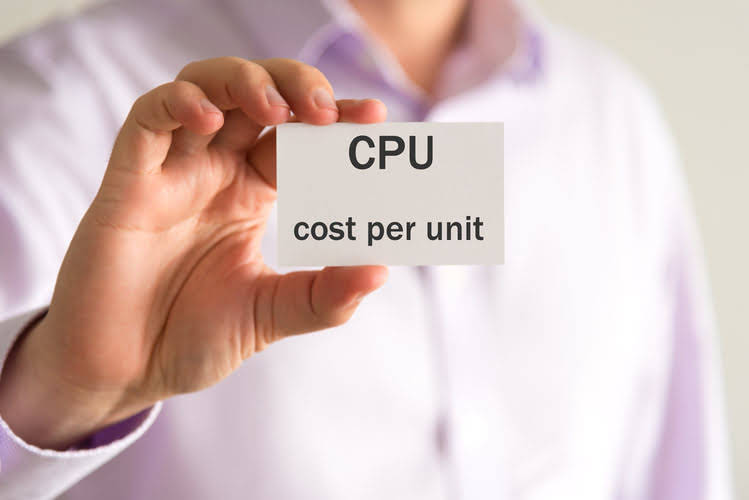
After the March 1 transaction is posted, the Direct Materials Price Variance account shows a debit balance of $50 (the $100 credit on January 8 combined with the $150 debit on March 1). It means that the actual costs are higher than the standard costs and the company’s profit will be $50 less than planned unless some action is taken. Thus, variances are based on either changes in cost from the expected amount, or changes in the quantity from the expected amount. The most common variances that a cost accountant elects to report on are subdivided within the rate and volume variance categories for direct materials, direct labor, and overhead. The standard direct materials cost perunit of a product consists of the standard amount of materialrequired to produce the unit multiplied by the standard price ofthe material. You must distinguish between standard costing system the terms standard priceand standard cost.
- A debit balance is an unfavorable balance resulting from more direct materials being used than the standard amount allowed for the good output.
- Variance analysis is also used to explain the difference between actual and budgeted sales dollars.
- Tight standards act as disincentive to work and loose ones don’t provide any incentive at all.
- Standard costs are the conclusions of managers and accountants as what something should cost.
Labor Cost Control
When these standards are set realistically, they encourage higher productivity and efficiency. Achieving these targets can lead to rewards and recognition, thereby motivation in the workforce to maintain high performance levels. After determining the standard values for cost elements, these values are applied to the specific product or service to calculate the standard value for each unit of product or service. This process often involves applying specific formulas or rules determined by the standard cost method. Management will only look into unusual variances, so workers may retaliate by not reporting negative Car Dealership Accounting exceptions.

Act as a Control Device in Implementing a Feedback of Control Cycle
The reason for the discrepancy may be ascertained and then only possible action can be taken to rectify the situation. But in the periods of inflation or depression this may not be true. So the management would be well advised to ascertain the profit or loss of each product separately. Besides this, management must also try to see that in producing each unit of product there is no unnecessary wastage or loss as regards materials, labour and other expenses.

What is Cost Accounting – 8 Major Disadvantages
- It is commonly used in practice as they balance motivation with realism, encouraging continuous improvement without setting unattainable goals.
- The variable manufacturing overhead efficiency and rate variances are used to determine if the overall variance is an efficiency issue, rate issue, or both.
- The use of standard costs is a key element of a management-by-exception approach.
- This comparison of actual costs with standard costs is called variance analysis and it is vital for controlling costs and identifying ways for improving efficiency and profitability.
- All important informations, facts and figures must be provided with cost records to make it more meaningful and enable the managers to exercise the cost control.
- Allowing for normal inefficiencies, the product is expected to require 0.50 hours of labor at a cost of 15.00 per labor hour.
Supposing, in a concern, material costs are of vital importance whereas undue emphasis has been laid down on labour costs, the system would not bring desired results. In small concerns, production cannot be properly scheduled since frequent changes in production conditions take place. (6) Review of Cost Accounting System – Standard costing is a projection of the existing system of cost accounting. It is, therefore, necessary to review the existing cost accounting system with particular reference to forms and records so that standard costing can be built upon bookkeeping the cost accounting system. The success of standard costing system depends upon the accuracy and reliability of standards of each element of cost. For setting the standards, it is very necessary that routine and working conditions should be studied thoroughly.
- Manufacturing overhead is typically a mixed cost consisting of a variable and a fixed component.
- Standard costs are cost targets used to make financial projections and evaluate performance.
- Standard costs are the costs that the management of the business wish to achieve in order to maximize the profitability of the business through efficient use of resources.
- Helps in inventory control – Costing furnishes control which management requires in respect of stock of materials, work-in-progress and finished goods.
- It is a predetermined amount (a standard) for the costs of direct materials, direct labor, and factory overheads.
Standard cost accounting

We recommend taking our Practice Quiz next, and then continuing with the rest of our Standard Costing materials (see the full outline below). We will pursue the interdependence of variances in the following examples.
Video Illustration 8-3: Computing direct labor variances

The term ‘standard cost’ can be defined as the expected cost per unit of the products produced during a period, which is based on various factors. It aims at measuring the performance, controlling the deviations, inventory valuation and deciding the selling price of the product especially when quotations are prepared. The standards should be fixed after a careful study of all technical processes and operations of the business. They should be fixed judiciously and should not be ideal but capable of being achieved. It will be appropriate to fix the responsibility of setting standards on a committee consisting of important persons such as Production Controller, Purchase Manager, Personnel Manager, Cost Accountant etc. Cost standards are scientifically predetermined costs of products, components of products, processes, or operations.
